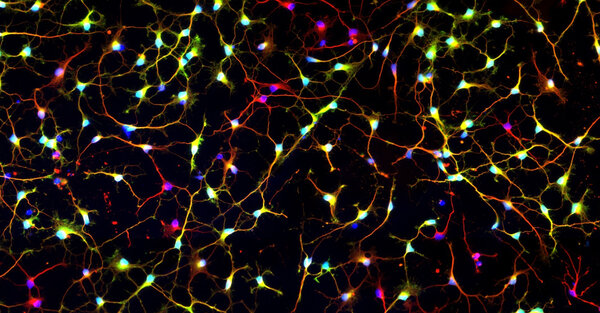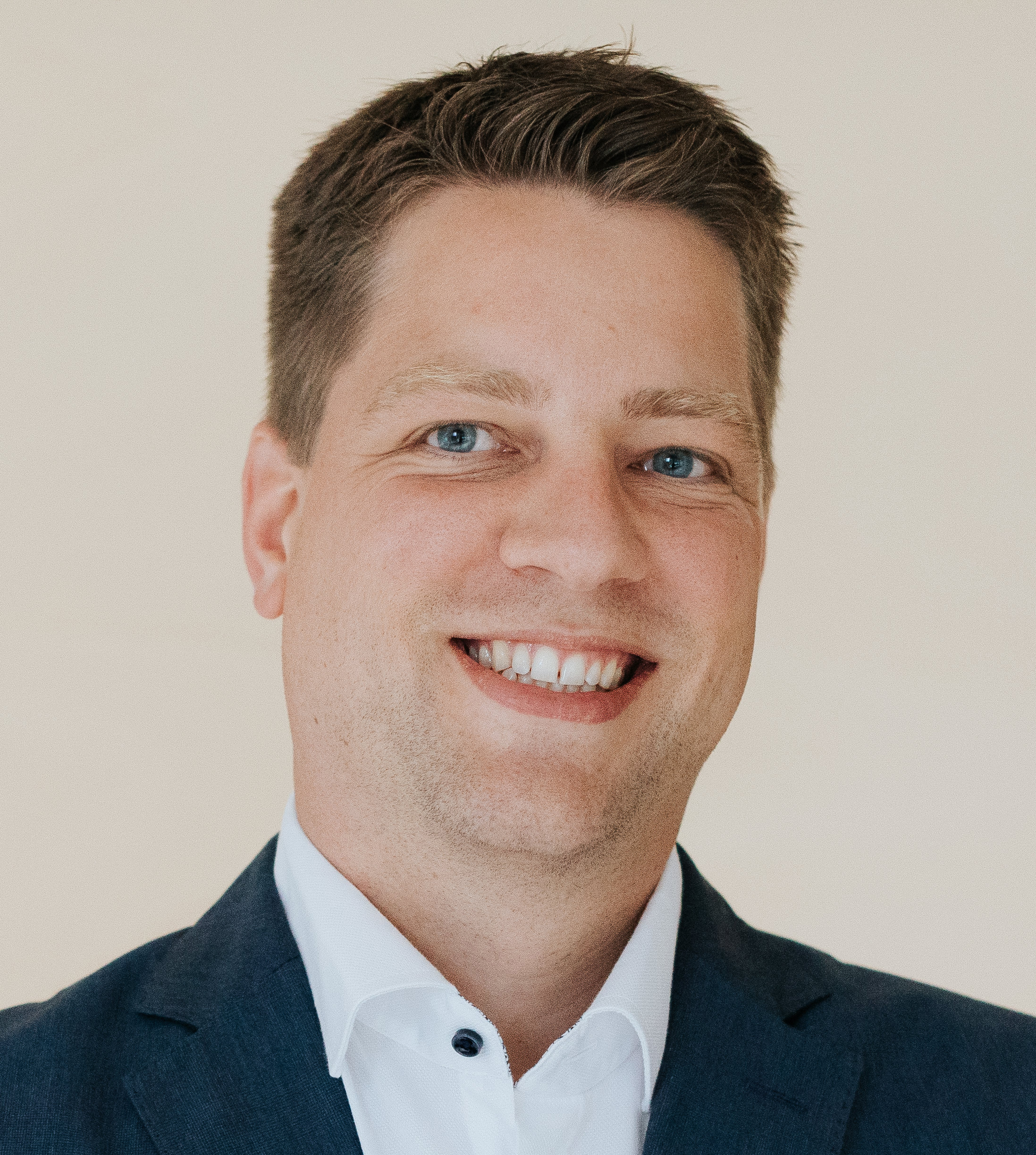

The research group "Advanced Cellular Models of Neurodegeneration" focuses on the development of cutting-edge cellular models for the study of monogenetic neurodegenerative diseases. Dr. Stefan Hauser leads a team dedicated to advancing our understanding of neurodegenerative diseases and identifying novel treatment strategies.
Our primary research objectives include:
- Development of iPSC-based disease models: We have generated over 100 induced pluripotent stem cell (iPSC) lines from patients with rare monogenetic neurological disorders. These iPSCs serve as tools for disease modeling, allowing the identification of pathophysiologically relevant cellular phenotypes and contributing to the development of therapeutic strategies.
- Preclinical treatment strategies for neurodegenerative diseases: Our group has developed innovative preclinical treatment options for monogenetic neurological disorders. This work has led to significant advances in innovative treatment strategies, such as allele-specific targeting strategies using antisense oligonucleotides (ASOs) for diseases like spinocerebellar ataxia type 3 (SCA3) as well as mRNA- or AAV-based approaches for hereditary spastic paraplegia (HSP).
- Biomarker discovery for neurodegenerative diseases: Our group is actively involved in the discovery and validation of reliable biomarkers for the assessment of pathophysiological processes and therapeutic interventions in slowly progressive neurodegenerative diseases. Our focus includes the identification of metabolic biomarkers using iPSC-derived neural models.
Looking forward, our future research directions include:
- Development of antisense oligonucleotide (ASO)-based strategies: We aim to optimize and standardize workflows for identifying and validating ASOs in iPSC-derived models. This includes extending ASO approaches to other toxic gain-of-function neurodegenerative diseases.
- Investigate preclinical treatment strategies for HSP and motor neuron disorders: With a focus on hereditary spastic paraplegia (HSP), we aim to identify common disease signatures across HSP subtypes and other motor neuron diseases by focusing on axonal phenotypes.
- Development of advanced cell culture models: Our team is dedicated to developing robust protocols for generating disease-relevant cell types in advanced cell culture systems. This includes the use of microfluidic systems, co-culture studies, and brain organoids to more closely mimic the physiological environment.
Selected Publications
Wiora L, Yuan Q, Hook S, Kraft M, Björkhem I, Ott M, Hauser S*, Schöls L*. AAV8-based gene replacement therapy for hereditary spastic paraplegia type 5. Mol Ther Methods Clin Dev., 11;33(3):101531 (2025)
Kagermeier T, Hauser S, Sarieva K, Laugwitz L, Groeschel S, Janzarik WG, Yentür Z, Becker K, Schöls L, Krägeloh-Mann I, Mayer S. Human organoid model of pontocerebellar hypoplasia 2a recapitulates brain region-specific size differences. Dis Model Mech., 1;17(7) (2024)
Korneck M, Leonhardt A, Schöls L, Hauser S. Generation of homozygous and heterozygous REEP1 knockout induced pluripotent stem cell lines by CRISPR/Cas9 gene editing. Stem Cell Res., 77:103378 (2024)
Helm J, Schöls L, Hauser S. Towards Personalized Allele-Specific Antisense Oligonucleotide Therapies for Toxic Gain-of-Function Neurodegenerative Diseases. Pharmaceutics, 14(8),1708 (2022)
Hauser S, Helm J, Kraft M, Korneck M, Hübener-Schmid J, Schöls, L. Allele-specific targeting of mutant ataxin-3 by antisense oligonucleotides in SCA3-iPSC-derived neurons. Molecular Therapy Nucleic Acids,27, 99 - 108 (2022)
Korneck M, Wiora L, Schöls L, Hauser, S. Generation of two SPAST knockout human induced pluripotent stem cell lines to create a model for Hereditary Spastic Paraplegia type 4.Stem cell research,60, 102741 (2022)
Höflinger P, Hauser S, Yutuc E, Hengel H, Griffiths L, Radelfahr F, Howell OW, Wang Y, Connor SL, Duell PB, DeBarber AE, Martus P, Lütjohann D, Griffiths WJ, Schöls L. Metabolic profiling in serum, cerebrospinal fluid, and brain of patients with cerebrotendinous xanthomatosis. J Lipid Res., 62:100078 (2021)
Hauser S, Schuster S, Heuten E, Höflinger P, Admard J,Schelling Y, Velic A, Macek B, Ossowski S, Schöls L. Comparative Transcriptional Profiling of Motor Neuron Disorder-Associated Genes in Various Human Cell Culture Models Frontiers in cell and developmental biology, 8, 544043 (2020)
Hauser S, Poenisch M, Schelling Y, Höflinger P, Schuster S, Teegler A, Betten R, Gustafsson J.-Å, Hübener-Schmid J, Schlake T, Chevessier-Tünnesen F, Horscroft N, Björkhem I, Schöls L. mRNA as a Novel Treatment Strategy for Hereditary Spastic Paraplegia Type 5. Molecular Therapy, 15, 359-370 (2019)
Schuster S, Saravanakumar S, Schöls L, Hauser, S. Generation of a homozygous CRISPR/Cas9-mediated knockout human iPSC line for the STUB1 locus. Stem cell research, 34, 101378 (2019)
Schuster S, Schelling Y, Synofzik M, Höflinger P, Schöls L, Hauser, S. Establishment of STUB1/CHIP mutant induced pluripotent stem cells (iPSCs) from a patient with Gordon Holmes syndrome/SCAR16. Stem cell research, 29, 166-169 (2018)
Hauser S, Erzler M, Theurer Y, Schuster S, Schüle R, Schöls L. Establishment of SPAST mutant induced pluripotent stem cells (iPSCs) from a hereditary spastic paraplegia (HSP) patient. Stem cell research, 17, 485-488 (2016)
Hauser S, Höflinger P, Theurer Y, Rattay T. W, Schöls, L. Generation of induced pluripotent stem cells (iPSCs) from a hereditary spastic paraplegia patient carrying a homozygous Y275X mutation in CYP7B1 (SPG5). Stem cell research, 17, 437-440 (2016)
Coming Soon








